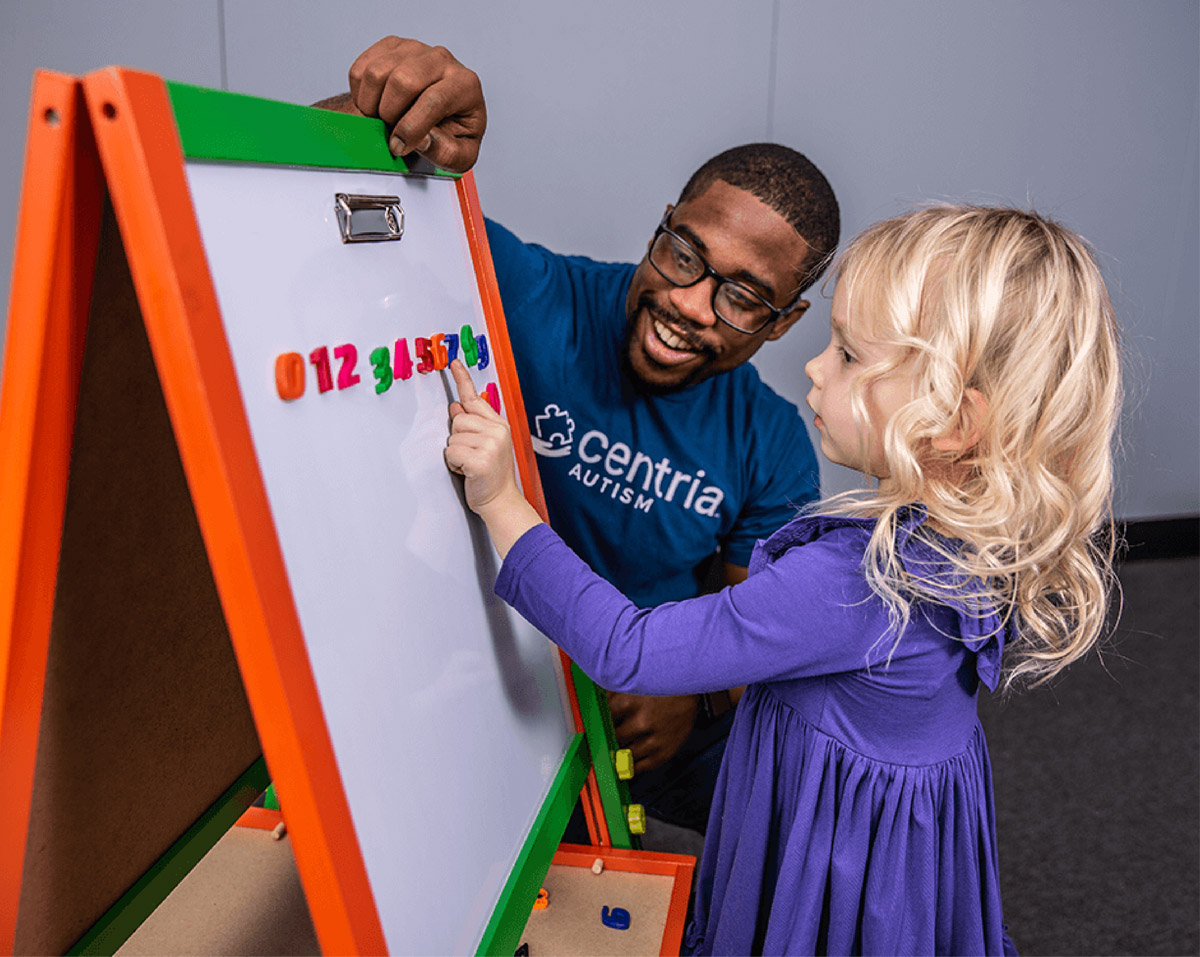When a child first begins Applied Behavior Analysis (ABA) therapy, every session can feel like climbing a mountain. There may be tears, setbacks, and moments of doubt. But then things start to shift. The child might begin using words instead of screams. They might sit through meals. They may even offer a hug for the first time.
Then can come the curveball: a new job, and with that, new health insurance. Suddenly, a trusted ABA provider isn’t on the list of in-network providers. The family may feel a wave of panic. Starting over means letting go of the trust, progress, and stability they had fought so hard to build.
This post is for every family standing at the intersection of progress and change. It’s a reminder that when therapy is working, staying the course can be the most powerful choice you make. At Centria Autism, we understand that continuity of care is not a luxury; it is essential for long-term success.
The Power of Predictability: Why Consistency Heals
Let’s start with what consistency truly means for your child, and for you.
Children with autism spectrum disorder (ASD) often thrive on predictability. The routine, the familiar faces, and the stable environment create a foundation of emotional safety that allows for learning.
When a child experiences consistency with the same team of Registered Behavior Technicians (RBTs), trust is built slowly, session by session, with familiar faces and a steady routine. This consistency isn’t just helpful; it’s healing, leading to crucial breakthroughs in skill acquisition and behavior management.
Parents benefit too. When you don’t have to re-explain your child’s needs, preferences, and history at every meeting, you gain more time to breathe, reflect, and feel like a true part of the clinical team.
It’s More Than One Great Therapist—It’s the System
Behind every skilled Board Certified Behavior Analyst (BCBA) is a model of care that supports their work. At clinics like Centria, families have seen the difference a strong system makes.
Even when a child’s BCBA goes on leave, the handoff can be seamless. The rest of the team knows exactly what the family is working on and what matters to them.
That kind of smooth transition doesn’t happen by luck. It happens in clinics that are built on robust communication, shared clinical values, and aligned goals ensuring the therapy model, not just the individual, is consistent.
When Variety is Part of the Plan
But not all consistency looks the same. Sometimes, a thoughtfully managed rotation of RBTs is part of the clinical plan.
When a child starts working with a new RBT, their parent might be nervous about regression. However, this planned variation often leads to a surprising result: the child generalizes skills in new ways and in new settings.
That’s the magic of planned rotation. While the BCBA remains the clinical anchor, a diversity of well-trained RBTs can help your child use their skills more flexibly in more settings and with more people, which is a critical goal of ABA.
The Fight for Continuity of Care
Stories of families who have to fight for weeks to secure an exception to stay with their provider underscore a painful reality: Navigating provider directories, insurance loopholes, and exception requests shouldn’t be prerequisites for continuity.
Families should be supported, not burdened, especially when what they’re asking for is simply to continue what’s already helping their child make meaningful progress. When you know your child is thriving, that relationship and that progress are worth fighting for.
The trust you build with your team isn’t just nice; it’s essential. It creates emotional safety, allowing your child to be more willing to try, to fail, and to try again. And for parents, that partnership means you don’t have to carry the entire weight of advocacy alone.
Consistency for a Successful Transition
Eventually, the goal is to move on, and that’s where consistency matters most.
The end of ABA therapy isn’t a door slamming shut; it’s a doorway to new opportunities. Families who’ve experienced a consistent team say the transition felt less like a goodbye and more like a handoff. The skills their children gained didn’t vanish; they continued to grow because they were taught, reinforced, and practiced within a stable foundation.
You know your child. You know what progress looks like. And if your gut is telling you that your current team is helping your child grow, honor that. Consistency might not be flashy, but in the long arc of progress, it’s what carries your child from one milestone to the next.
So if it’s working? Stay the course. You’re not just preserving progress; you’re building a foundation that lasts.





